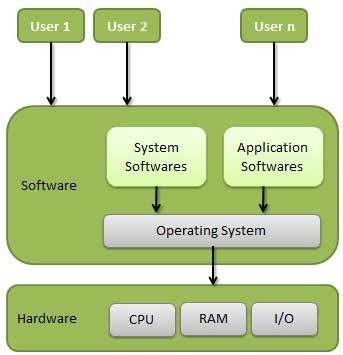Algorithms, Radicalization, And Mass Violence: Who Bears Responsibility?

Table of Contents
The Role of Algorithms in Amplifying Extremist Content
Algorithms, the invisible hands guiding our online experiences, play a significant role in the spread of extremist ideologies. Their design, prioritizing engagement above all else, inadvertently fosters environments conducive to radicalization.
Algorithmic Bias and Filter Bubbles
Algorithms are inherently biased towards content that generates high engagement – often sensational, controversial, and emotionally charged. This bias creates filter bubbles and echo chambers, where users are primarily exposed to information reinforcing their existing beliefs, regardless of its veracity.
- Examples of algorithms prioritizing sensational content: Clickbait headlines, emotionally charged images, and inflammatory language are often favored by algorithms, driving engagement even if the content is inaccurate or harmful.
- The spread of misinformation: Algorithms contribute to the rapid dissemination of misinformation and propaganda, often without fact-checking or context.
- The lack of diverse perspectives in feeds: Personalized feeds, designed to maximize user engagement, often limit exposure to diverse viewpoints, creating isolated spaces where extremist narratives thrive. This lack of diverse perspectives strengthens the power of extremist echo chambers.
Recommendation Systems and Radicalization Pathways
Recommendation systems, designed to suggest related content, can lead users down a "rabbit hole" of increasingly extremist material. What starts with seemingly innocuous searches can quickly escalate to exposure to violent and hateful content.
- Case studies illustrating how algorithms contribute to radicalization: Numerous studies have documented how algorithms contribute to the radicalization of individuals, often by subtly guiding them towards increasingly extreme content.
- The role of personalization in shaping exposure to extremist viewpoints: Personalized recommendations, based on user history and preferences, can inadvertently create pathways leading to extremist groups and ideologies. This personalized approach can facilitate online grooming and extremist recruitment.
The Responsibility of Social Media Platforms
Social media platforms, the primary vehicles for the spread of online extremism, bear significant responsibility for mitigating the risks associated with their algorithms.
Content Moderation Challenges and Failures
Content moderation is a monumental challenge for these platforms. The sheer volume of content, coupled with the sophisticated nature of extremist propaganda, makes real-time monitoring and removal extremely difficult.
- Examples of platforms' slow responses to extremist content: Numerous instances have demonstrated the slow reaction times of social media companies to extremist content, allowing harmful material to spread widely before removal.
- The limitations of automated content moderation systems: Automated systems, while helpful, are often unable to identify subtle forms of extremism or nuanced hateful speech, requiring substantial human oversight.
- The challenges of identifying and removing harmful content in real-time: The rapid evolution of extremist terminology and strategies presents ongoing challenges for content moderators working to identify and remove harmful content effectively. The speed of information sharing online exacerbates the challenge.
Profit vs. Public Safety
The tension between maximizing profit and ensuring public safety is a critical ethical dilemma for social media companies. Their business models, often reliant on user engagement, can incentivize the amplification of even harmful content.
- Discussion of business models incentivizing engagement, regardless of content quality: The design of many social media platforms prioritizes engagement metrics, regardless of whether the content is accurate, harmless, or even legal.
- Criticism of prioritizing profit over user safety: Many critics argue that social media companies prioritize profit maximization over the safety and well-being of their users, leading to inadequate investment in content moderation and safety measures. This prioritization raises questions of corporate accountability and social media responsibility.
The Individual's Role and Responsibility
While platforms and algorithms bear significant responsibility, individuals also have a crucial role to play in combating online radicalization.
Critical Thinking and Media Literacy
Developing strong critical thinking and media literacy skills is paramount in navigating the complexities of the online world.
- Strategies for identifying misinformation and propaganda: Individuals need to learn how to identify biases, evaluate sources, and cross-reference information before accepting online content as fact.
- Techniques for evaluating online sources: Understanding the provenance of information, assessing the credibility of websites and social media accounts, and recognizing common propaganda techniques are essential skills.
- The role of education in combating online radicalization: Comprehensive education programs focused on information literacy and critical thinking are essential in equipping individuals with the skills to navigate online misinformation and resist radicalization.
Bystander Intervention and Reporting Mechanisms
Individuals should actively utilize reporting mechanisms provided by social media platforms and participate in bystander intervention when encountering extremist content or behavior.
- Encourage proactive reporting of extremist content: Reporting harmful content is a crucial step in limiting its reach and helping social media platforms take action.
- The importance of community action in preventing violence: Communities need to work together to identify and address instances of radicalization, preventing potential violence before it occurs. Active participation in online safety measures and community action contributes to a safer online environment.
Governmental Regulation and Legal Frameworks
Effective governmental regulation and clear legal frameworks are needed to hold social media platforms accountable and promote online safety.
The Need for Effective Legislation
Stronger legislation is needed to regulate online platforms and ensure they actively combat the spread of extremist content.
- Discussion of current legislative efforts: While many governments are working to address this issue, current legislative efforts often struggle to keep pace with the rapid evolution of online extremism.
- Challenges in regulating online spaces: The global nature of the internet and the challenges of cross-border regulation create significant difficulties in holding platforms accountable.
- The need for international cooperation: Effective regulation requires international cooperation to address the global spread of online extremism.
Balancing Free Speech and Public Safety
The crucial balance between protecting freedom of speech and ensuring public safety necessitates carefully considered legal approaches.
- Discussion of the complexities of this balance: Balancing these competing values requires nuanced legislation that avoids overly broad restrictions on free speech while effectively addressing the spread of harmful content.
- The need for nuanced legal approaches: Legislation needs to be specific enough to target harmful content effectively while avoiding unintended consequences that might stifle legitimate discourse. This delicate balance impacts both digital rights and online censorship.
Conclusion
Understanding the interconnected roles of algorithms, social media platforms, individuals, and governments is critical to addressing the complex issue of algorithms, radicalization, and mass violence. The responsibility is shared; each entity must play its part in mitigating the risks. We must engage in critical thinking, report harmful content, and advocate for policies that hold platforms accountable, promoting a safer online environment. Let's work together to prevent future tragedies by addressing the role of algorithms in radicalization and building a more responsible digital landscape. For further information and resources on online safety and combating extremism, visit [link to relevant organization].

Featured Posts
-
 Rudy Giuliani Honors Late Friend Bernie Kerik Remembering A Dedicated Public Servant
May 31, 2025
Rudy Giuliani Honors Late Friend Bernie Kerik Remembering A Dedicated Public Servant
May 31, 2025 -
 The Six Golden Rules Of Office Lunch Etiquette
May 31, 2025
The Six Golden Rules Of Office Lunch Etiquette
May 31, 2025 -
 Exploring Local History On Kpc News Com
May 31, 2025
Exploring Local History On Kpc News Com
May 31, 2025 -
 Is Apple Changing Its Operating System Names The Latest News
May 31, 2025
Is Apple Changing Its Operating System Names The Latest News
May 31, 2025 -
 Is This The Good Life Evaluating Your Current Situation
May 31, 2025
Is This The Good Life Evaluating Your Current Situation
May 31, 2025
